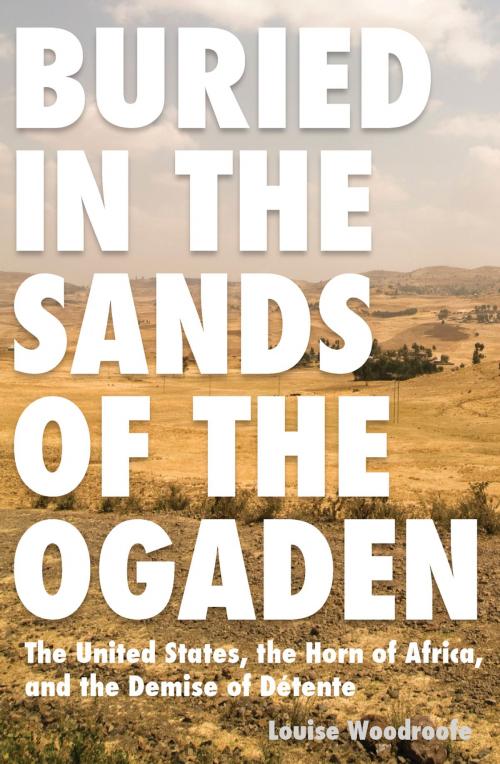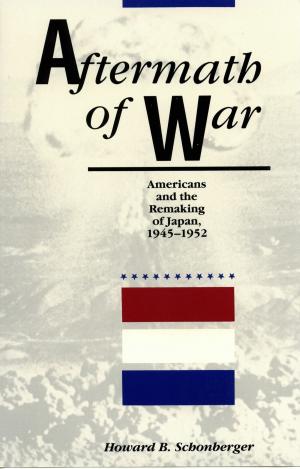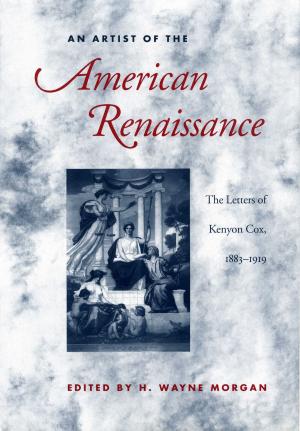Buried in the Sands of the Ogaden
The United States, the Horn of Africa, and the Demise of Detente
Nonfiction, Social & Cultural Studies, Political Science, International, International Relations, History, Modern, 20th Century| Author: | Louise P. Woodroofe | ISBN: | 9781612777207 |
| Publisher: | The Kent State University Press | Publication: | December 7, 2012 |
| Imprint: | The Kent State University Press | Language: | English |
| Author: | Louise P. Woodroofe |
| ISBN: | 9781612777207 |
| Publisher: | The Kent State University Press |
| Publication: | December 7, 2012 |
| Imprint: | The Kent State University Press |
| Language: | English |
How the Cold War came to Africa—and everybody lost
When the Strategic Arms Limitation Talks (SALT) between the Soviet Union and United States faltered during the administration of Jimmy Carter, National Security Advisor Zbigniew Brzezinski claimed that “SALT lies buried in the sands of the Ogaden.” How did superpower détente survive Vietnam but stumble in the Horn of Africa? Historian Louise Woodroofe takes Brzezinski’s claim as a starting point to analyze superpower relations during the 1970s, and in so doing she reveals how conflict in East Africa became a critical turning point in the ongoing Cold War battle for supremacy.
Despite representing the era of détente, the 1970s superficially appeared to be one of Soviet successes and American setbacks. As such, the Soviet Union wanted the United States to recognize it as an equal power. However, Washington interpreted détente as a series of agreements and compromises designed to draw Moscow into an international system through which the United States could exercise some control over its rival, particularly in the Third World. These differing interpretations would prove to be the inherent flaw of détente, and nowhere was this better demonstrated than in the conflict in the Horn of Africa in 1974–78.
The Ogaden War between Ethiopia and Somalia involved a web of shifting loyalties, as the United States and Soviet Union alternately supported both sides at different points. Woodroofe explores how the war represented a larger debate over U.S. foreign policy, which led Carter to take a much harder line against the Soviet Union. In a crucial post-Vietnam test of U.S. power, the American foreign policy establishment was unable to move beyond the prism of competition with the Soviet Union.
The conflict and its superpower involvement turned out to be disasters for all involved, and many of the region’s current difficulties trace their historic antecedents to this period. Soviet assistance propped up an Ethiopian regime that terrorized its people, reorganized its agricultural system to disastrous effects in the well-known famines of the 1980s, and kept it one of the poorest countries in the world. Somalia’s defeat in the Ogaden War started its descent into a failed state. Eritrea, which had successfully fought Ethiopia prior to the introduction of Soviet and Cuban assistance, had to endure more than a decade more of repression.
How the Cold War came to Africa—and everybody lost
When the Strategic Arms Limitation Talks (SALT) between the Soviet Union and United States faltered during the administration of Jimmy Carter, National Security Advisor Zbigniew Brzezinski claimed that “SALT lies buried in the sands of the Ogaden.” How did superpower détente survive Vietnam but stumble in the Horn of Africa? Historian Louise Woodroofe takes Brzezinski’s claim as a starting point to analyze superpower relations during the 1970s, and in so doing she reveals how conflict in East Africa became a critical turning point in the ongoing Cold War battle for supremacy.
Despite representing the era of détente, the 1970s superficially appeared to be one of Soviet successes and American setbacks. As such, the Soviet Union wanted the United States to recognize it as an equal power. However, Washington interpreted détente as a series of agreements and compromises designed to draw Moscow into an international system through which the United States could exercise some control over its rival, particularly in the Third World. These differing interpretations would prove to be the inherent flaw of détente, and nowhere was this better demonstrated than in the conflict in the Horn of Africa in 1974–78.
The Ogaden War between Ethiopia and Somalia involved a web of shifting loyalties, as the United States and Soviet Union alternately supported both sides at different points. Woodroofe explores how the war represented a larger debate over U.S. foreign policy, which led Carter to take a much harder line against the Soviet Union. In a crucial post-Vietnam test of U.S. power, the American foreign policy establishment was unable to move beyond the prism of competition with the Soviet Union.
The conflict and its superpower involvement turned out to be disasters for all involved, and many of the region’s current difficulties trace their historic antecedents to this period. Soviet assistance propped up an Ethiopian regime that terrorized its people, reorganized its agricultural system to disastrous effects in the well-known famines of the 1980s, and kept it one of the poorest countries in the world. Somalia’s defeat in the Ogaden War started its descent into a failed state. Eritrea, which had successfully fought Ethiopia prior to the introduction of Soviet and Cuban assistance, had to endure more than a decade more of repression.















